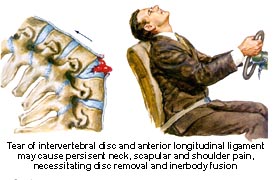The differences between subjective and objective findings are clear and necessary when sorting out the pertinent aspects of a case.
The definition of Subjective per Medline Plus: “1 a: relating to or determined by the mind as the subject of experience <subjective reality> b: characteristic of or belonging to reality as perceived rather than as independent of mind c: relating to or being experience or knowledge as conditioned by personal mental characteristics or states 2 a: arising from conditions within the brain or sense organs and not directly caused by external stimuli <subjective sensations> b: arising out of or identified by means of one’s perception of one’s own states and processes and not observable by an examiner <a subjective symptom of disease> <caused objective or subjective clinical improvement or both.” In comparison, the definition of Objective: “1: of, relating to, or being an object, phenomenon, or condition in the realm of sensible experience independent of individual thought and perceptible by all observers <objective reality> 2: perceptible to persons other than the affected individual <an objective symptom of disease>” [www.merriam-webster.com/medlineplus/]
It is clear that the OBJECTIVE findings are necessary to support or dispute the claims. Simplistically, I often explain that subjective is “spoken” and objective is “visual.”
Medical research is part of my skill-set which I want to share with my clients.
MRI imaging can reveal “fatty infiltrates” in the cervical muscles which support chronic cervical whiplash:
http://www.ncbi.nlm.nih.gov/pubmed/20118837
http://www.ncbi.nlm.nih.gov/pubmed/21698170
http://www.ncbi.nlm.nih.gov/pubmed/22020614
Here are two studies regarding the vestibular effects of cervical whiplash:
http://www.ncbi.nlm.nih.gov/pubmed/2068902
http://www.ncbi.nlm.nih.gov/pubmed/1084967
Physical Therapy testing considered valid instruments for discriminating between whiplash patients and healthy people:
http://www.ncbi.nlm.nih.gov/pubmed/8902661
And an interesting concept noting diagnostic blocks are the truth serum for malingering:
Each of these abstracts serve a purpose in clarifying the subjective versus objective analysis of cervical whiplash. I have an specific interest in the fatty infiltrate MRI findings after reviewing MRI reports from a local facility which the radiologist identifies these findings in patients, clarifying that this finding is associated with chronic neck pain following whiplash injury.
This post was provided by Denise Reck RN
Leave a Comment